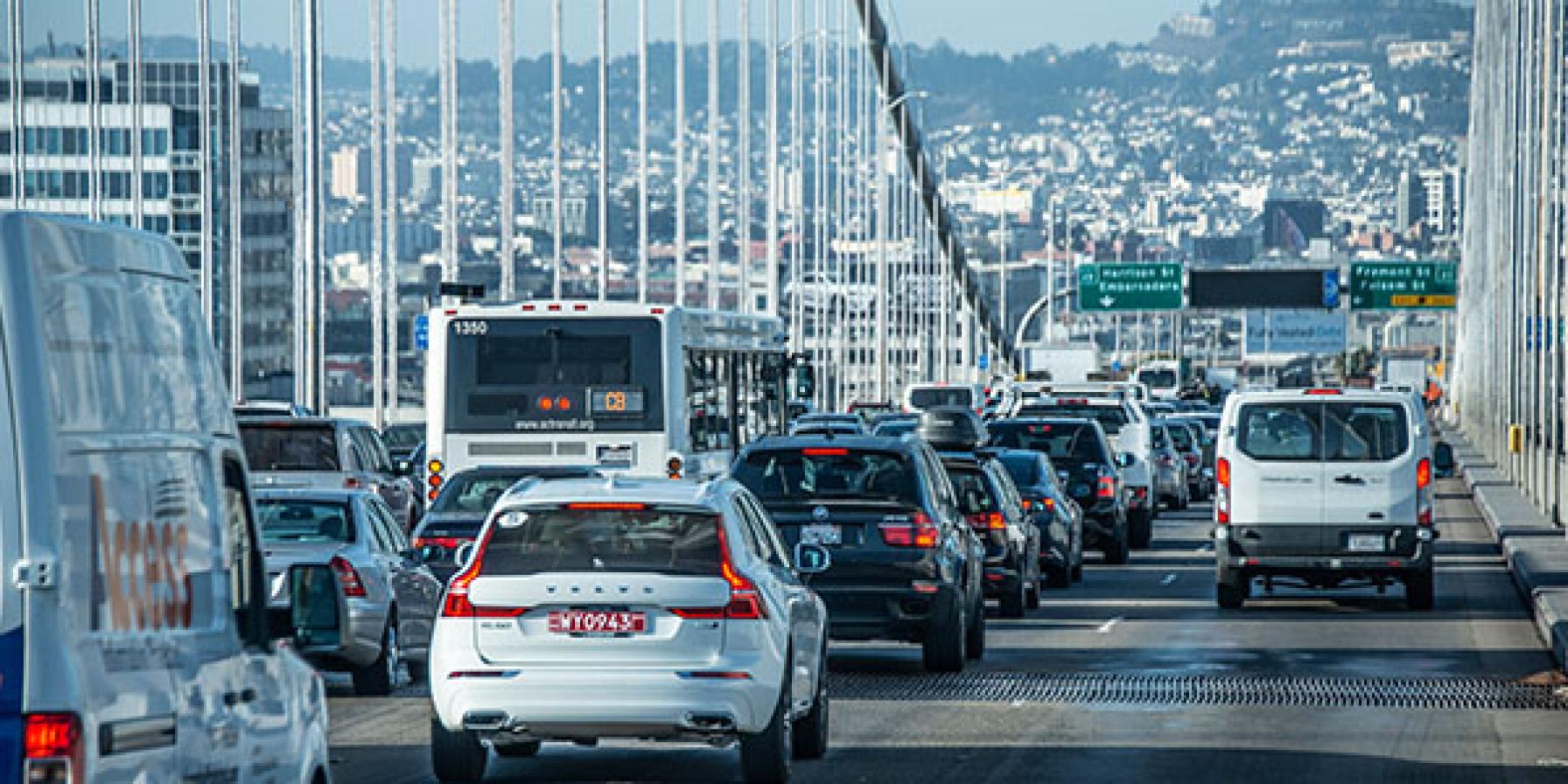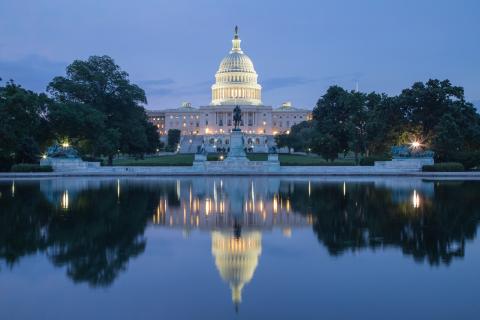- Home
- IBTTA Insights
- Bounce Back Better: Pandemic Sped Up Bay Area AET Conversion from Five Years to One
Stories
Bounce Back Better: Pandemic Sped Up Bay Area AET Conversion from Five Years to One


Andrew Fremier is Deputy Executive Director of the Bay Area Toll Authority (BATA) and Deputy Executive Director, Operations at the Metropolitan Transportation Commission (MTC). In this interview, the first in IBTTA’s Bounce Back Better series, he talks about the lessons both agencies are learning about how quickly systems can adapt and change—during a pandemic, and afterwards. “Photo credit - ©2018 Peter Beeler”
What’s one thing your agencies have done, or plan to do, to bounce back better after the pandemic?
The easiest thing to start with is completing the shift to all-electronic tolling (AET). We’re not exactly moving at light speed, but it’s still a very positive story. BATA operates the seven state-owned toll bridges in the Bay Area. We also do the back office work for the Golden Gate Bridge District and the area’s express lane operators, and because California is interoperable, we manage any customers from the south that come through our area.
The bridges are the workhorses of the system, and prior to COVID-19, they all offered AET, FasTrak, and cash tolling. We had a transition plan to introduce full AET over a period of five or six years. But our toll collectors are state employees, and when the pandemic hit and we went into shelter-in-place, the governor made the decision to pull them out and put us in a cashless situation. We worked closely with the state to navigate the transition, made sure public information was done well and that the operational decisions were proper, and we temporarily eliminated violations and DMV holds.
At first, we thought we would bring the collectors back when things calmed down. But we learned right off the bat that we could accelerate the AET transition from five or six years to a year or less. That still assumed the collectors would come back, but that doesn’t appear likely anytime soon—California isn’t showing much of a rebound yet, and the safety of the travelling public and our staff is paramount.
So the conundrum is that we have no clue when or if the collectors will return for that interim period. But it does create a moment for them to make the transition to other opportunities. We have 250 toll collectors, about 100 of whom work part-time, and we want to help them shift at the end of cash collection so they land on their feet. We’re very concerned about the collectors and their well-being.
Would you have done the same thing, or done it so quickly, if not for the pandemic?
Absolutely not. The big change for us is the opportunity to shave five years off the transition. As we all know, when you work on a project for that long you put a lot of resources into it, and if you can speed it up you don’t need the same resources. With a shorter process, the public needs to be able to understand the transition. But the forced move to cashless showed us the public didn’t have any problems with it—they were very receptive, and never missed a beat. The concerns were all internal—the financial and legal ramifications, and the operational changes that had to take place.
The biggest item that caught our attention was the opportunity to save a lot of resources on the back end by moving into a new Open Road Tolling (ORT) environment, which meant going from 65 or 66 lanes with equipment in them to perhaps 30. The ripple effect on our inventory and maintenance requirements is a big advantage. It’s allowing us to complete the transition to the next generation of lane systems multiple years faster than we would have otherwise.
What’s unique or innovative about this project?
Something interesting about this experience is that it isn’t unique. All-electronic tolling is very well understood and managed across the nation and around the world, and frankly, 80% of our transactions are on AET today if you include the Golden Gate Bridge, the managed lanes, and the parking we manage for San Francisco Airport.
So it was really just moving the needle for the remaining cash payers who either struggle with bank accounts and charge cards, or are traditionally uncertain about sharing their information, or figure they don’t need it because they’re infrequent users. We’ve been able to capitalize on the existing contracts we already have in place and use them in a creative way to change on the fly, and that allows us to work in this new environment.
Is there anything you’d like to add?
There’s been a big move across the nation toward the concept of quick-build, where you spend less time thinking and planning—you just jump in and experiment using existing infrastructure. Several jurisdictions are trying to convert car lanes to high-occupancy lanes for buses, HOVs, and e-bikes, and the Bay Area is heavily invested in active transportation, so we see the opportunity for some significant changes. We were on this well before COVID-19 hit, and now we’ve seized the opportunity to make some improvements.
San Francisco, in particular, has led the charge—they’ve doubled their protected bike lanes, and the new capacity is already active. And we’re learning how much an e-bike expands the audience of people who can get around more easily, even in a city with a lot of hills, and extend bicycle use across a wider footprint. We’ve looked at the range and level of customer interest in crossing the Bay Bridge on a bike, and you triple access when you add e-bikes into the equation.
The problem in that particular example is that it isn’t a quick-build project—we can’t just give up a lane on the bridge. But we can still look at the gaps in our trail system and fix them, then add transit options that take you across the bay in a more structured way.
The pandemic emergency also created the need to do things on the highway system without asking permission, making temporary improvements to improve access to the bridges. We do see transit and HOV lanes as an answer to both climate change and congestion, so we want to do some quick-build on the state highway system. We’ll be coming up with those plans over the fall, so that transit and HOV can benefit from the rebound when it’s safe to travel.
Click here for IBTTA’s COVID-19 information and response page.

Joining IBTTA connects you to a global community of transportation professionals, offering unmatched opportunities for networking, knowledge-sharing, and collaborative innovation in the tolling and transportation sector.
Follow IBTTA on social media for real-time updates on transportation trends and collaborative opportunities.





